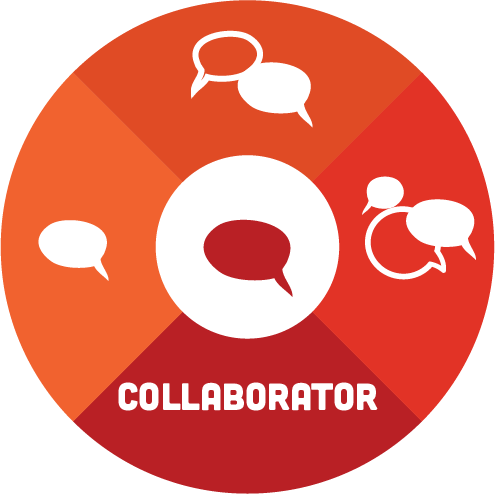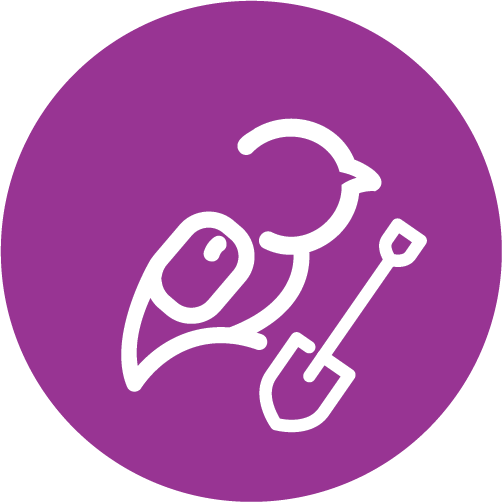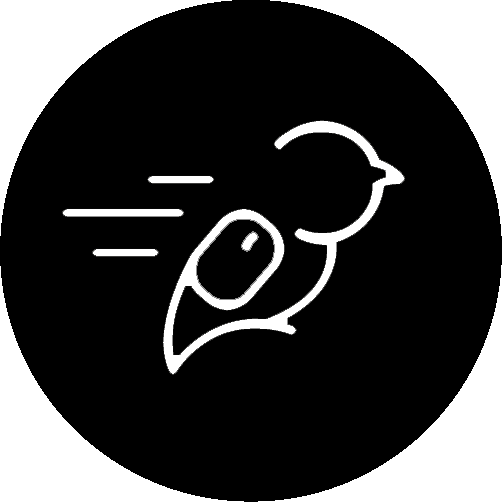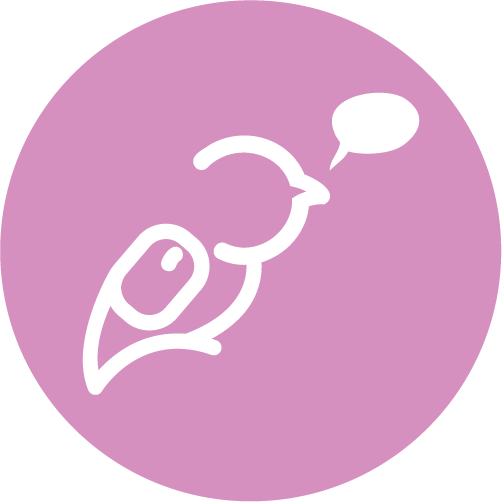

 In This Section
In This Section
We’ll have a look at the following topics:
- What a network is and what it can do for you
- How to network effectively
- Finding and being a mentor
And work towards meeting these outcomes:
- Describing what networking is and why it is important for future professional and social success
- Planning how to use the Web to network for employability and professional pursuits
- Finding, and being, a supportive mentor
Networking, amirite? Much like group work, thinking about networking sounds like it could be exhausting. Building an entire network sounds a little overwhelming, too, while we’re at it. That’s why in this section we break it right down so you can chip away at building a network, one small connection at a time. When you take it slowly and steadily, you maybe won’t even notice that you’re building it until one day you sit back and realize “hey I got a lot of support out here! Nice!”
What is Networking?
And what can it do for you? Networking is about building and sustaining mutually beneficial relationships with people who may influence your professional development. It may seem like an intimidating concept at first, as many students associate it with ingenuine and socially anxious interactions. However, networking takes many different forms – it ranges from formal interactions at specific events and conferences to informal interactions over social media. You’re likely networking in everyday life without realizing it. Most people think of your network consisting of professionals in your field of interest, but it also includes friends, family members, other students, customers, and more. You never know the connections you’ll make through the people you’ve already encountered in life. Yet, it’s also important to continue expanding your network in different ways to maximize your potential to develop professionally.
If you want to dig in to this topic more deeply, have a look at this article written by a student at the University of Ottawa: What Is Networking And Why Is It Important At University?
Why is networking important to your future professional and social success?
New career opportunities
Career advice
Improve your social skills
Develop lifelong friendships
Planning How to Network Effectively Using the Web
Take a minute and think about your experience of learning as a post-secondary student: who are the people that you learn with? Is there someone in your college/university community who you often seek out to talk through difficult concepts? Or maybe you prep for exams with a study buddy? Who do you turn to (in-person or online) for advice on the best way to approach a problem or topic?
It’s likely not just one person: your learning network might be made up of dozens or even hundreds of people with different interests and areas of expertise. And you probably engage with them through a variety of spaces, online and in real life. They may include people that live halfway across the globe that you’ve never even met!
So you may have an informal Personal Learning Network that surrounds you – and, indeed, these networks are meant to be informal – but as we look at Personal and Professional Learning Networks, or PLNs, in more detail, we’ll encourage you to think about how you can develop your PLN to better support your learning and professional goals.
What are Personal Learning Networks?
Personal, or more accurately, personalized – might be organized around personal or professional interests, but they are uniquely yours. You have ownership and autonomy over who’s in your network, and how you choose to engage with them. You might communicate with your learning network through the same tools that you use for primarily social purposes, but PLNs are – at their core – meant to promote your own growth, development and understanding in an area of interest.
These connections are built and strengthened through shared interests, conversations and other interactions, like posting links to useful articles or offering insights from one’s own experience. Of course, the notion that we learn with and from a group of peers – is hardly new. But what’s unique to the formulation of Personal Learning Networks within it – is that it speaks specifically, inseparably to how these connections between people take place in a digital space, and how they are fundamentally transformed by our interactions with and through digital technologies.
 Leveraging the affordances of digital technologies means that the types of activities we can engage in as part of a personal and professional learning network – and the people or organizations we can engage with – take on a vastly different form. Sure you might be able to find out how to get your voice to sound like Darth Vader on your podcast by doing your own research. But it’s more fun to find out if your network already knows how to do that!
Leveraging the affordances of digital technologies means that the types of activities we can engage in as part of a personal and professional learning network – and the people or organizations we can engage with – take on a vastly different form. Sure you might be able to find out how to get your voice to sound like Darth Vader on your podcast by doing your own research. But it’s more fun to find out if your network already knows how to do that!
You might share an assignment you’ve drafted with your network and get feedback on what you’ve done from a variety of perspectives. Or you might be inspired by a provocative article that someone else in your network has posted. Or you might remix someone else’s work (license permitting) as a way of taking their idea – and the conversation around it – further. While digital technologies aren’t required for these learning activities to happen, they enable us to engage in them in novel, more, and easier ways.
The digital technologies which help to facilitate PLNs also mean that they are not bound by the same limitations as, say, the physical – or even virtual – space of a post-secondary course. You may use tools like Twitter, LinkedIn, social media, blogs and RSS readers as their primary technological platform or platforms for communication and learning.[3]
Strategies to Build a PLN
PLNs don’t just happen: they take time and effort to develop through conversations and exchanges. You are effectively building and maintaining a social network focused on a personal or professional learning goal. Many of the same strategies that you use to cultivate your social media presence are useful to remember, with a few extra things to keep in mind.
As you progress in your discipline, you might find that your learning network becomes more defined and focused on your subject; you might also find that it becomes more important to your learning as you begin to seek information and knowledge from a broader range of sources. You are cultivating a network in a purposeful way, an ongoing process as you progress in your studies and edge closer to your career.
As you develop in your academic career, you might seek out certain spaces, organizations and groups where you can build your PLN in an attempt to cultivate your career pursuits. Here are a few strategies:
General guidance:
- Attend conferences (take advantage of that student rate and/or funding opportunities aimed at supporting student representation at conferences),
- Carefully select and join social media groups related to your topic. Strengthen your connections by commenting and sharing the work of others, and contributing back.
- Be authentic – build your PLN around your sincere interests, and don’t just focus on networking in a way aimed only at landing a job.
- Be strategic – take your cues from people in your network; if you notice at a conference that a number of presenters are posting their Twitter account names, that is likely the place where others will be found; Twitter certainly is one of the most popular PLN tools, but it might not be the common gathering place of your discipline (designers for example might be on Dribbble)
- Think before you share – but in a more intentional way, consistent with the identity you are projecting (i.e. it’s okay to be personal, but not too personal)
Using Twitter to Build your PLN
The Liberated Learner modules build upon the original Ontario Extend program for Empowered Educators. A critical part of Ontario Extend was to engage participants in building their PLN using Twitter. Check out how this PLN was born and note the connections growing – and also recognize they have continued to grow since then!
Get started building your own PLN using Twitter by:
- Creating an account if you don’t have one already and build your profile and bio, paying attention to how you want to represent yourself – a real photo is recommended and use those 160 characters available for your bio wisely.
- Follow people – if you start with a few similarly minded fellow students, instructors or people you admire, generally their list of followers can prompt further connections
- Lurk – if you’re new to Twitter, you might want to spend the first few weeks occasionally opening the feed and checking out the conversations and how people you may want in your PLN converse with one another before diving in.
- Contribute – once you’re comfortable, start liking, retweeting and tweet away!
Other Methods to Build your PLN
Twitter isn’t the only space of course. It may not be the place to start for you – there are many other choices you can make about how to use the web to build your PLN – and sometimes this is guided by what discipline you are in. Here are a few other tools and methods you might consider:
- Using a Blog to Build your PLN – if you’re more ambitious, you may want to explore using a blog to share content and build your PLN in a more focused way.
- LinkedIn – LinkedIn can help, particularly with building a professional learning network. Generally the first few search results when someone looks up your name are LinkedIn and Facebook profiles, so you want to make sure they are cultivated carefully. This tipsheet from Humber College can help with the creation of a solid profile and offers guidance on building connections.
Above all, recognize that although a PLN is emergent, it doesn’t just happen, It requires attention and cultivation.[4]
 Dig Deeper
Dig Deeper
If you’re interested in digging into these topics more deeply, check out these other great resources:
- Howard Rheingold’s Advice on Building a PLN
- Using Twitter as a Personal Learning Network
- Personal Learning Networks: Defining and Building a PLN

Activity: Mapping your Personal Learning Network
An internet search of the term “Personal Learning Network” or “PLN” will yield many results which too often emphasize the tools that can be used to build and maintain a PLN, not the people who are in them – and networks *are* people.
The ‘Mapping Your Personal Learning Network’ activity asks you to consider and then represent who belongs to your PLN.
For the activity, use a tool like Google Drawings, Coggle (a Google Drive app for mind mapping), PowerPoint, or good old pen and paper to create a visual diagram of the people – and groups, collectives and other beings – in your PLN. If creating a visual diagram presents a barrier for you, you can alternatively create an audio or video reflection.
Level 1: For Your Eyes Only
- Choose an interest around which to organize your PLN.
- Indicate your topic somewhere on your diagram (you *could* put it in the central node, but actually, you are at the centre of your learning network!)
- Identify a few people who already belong to your network as it relates to your interest or topic: your nodes. They might be friends, influential instructors, mentors, people you’ve met at conferences or events, and so on. Then think of a few more nodes that you may not (yet) know personally but who you would include in your network. Who are the noted scholars or experts in your area of interest that you might follow?
- Map the nodes (names) that you’ve brainstormed onto your diagram. Your diagram should include at least 10 nodes, although they can be specific individuals or they can be groups.
- Rearrange and mark up your diagram to uncover more about the nodes in your PLN and how you interact with them. You might indicate any of the following in the design of your diagram (e.g. by grouping, using different colours or symbols or text labels, etc.):
- their role (e.g. student, instructor, science educator, blogger, etc.)
- their role in your network (e.g. collaborator, mentor, provocateur, consultant, etc.)
- the relative weight of the connection (i.e. strong tie or weak tie?)
- the reciprocity of the connection (i.e. is it one-way, or a dialogue?)
- the technologies you use to connect to your network
- the relationships between nodes to each other (i.e. are there clusters of nodes who interact?)
- anything else you’d like to represent on your diagram that helps to illustrate your interactions – past, present or future
Level 2: Share With One Friend
Export or snap a pic of your diagram and share it with one other person (likely one you are close to) in your PLN. Have a chat about it with them. You might even encourage them to create their own version and share what strategies work better than others and what connections are more valuable.
Level 3: Share With a Group/The World!
You can take this activity a step further by sharing the image or representation of your PLN in your preferred tool (e.g., Twitter, blog, RSS feed, etc. etc.) and reflecting upon it. You might consider asking for suggestions of who might be missing in order to avoid being trapped in a filter bubble.
An Example
See an example PLN drawing (link opens in a new window) from a member of the Liberated Learner Development Team below.
What do I do with this?
If you are playing along using the Liberated Learner Work Binder, upload your “PLN Map” file to the Collaborator Module folder.
If this is the only Liberated Learner activity you plan to do, then save the file wherever you like.
Mentorship
Finding a Mentor
Understanding what a mentor is and isn’t
A mentor is usually someone, with experience, working in a similar field or role as you, but it’s also possible they are in a field or role you aspire to become a part of. According to Roepe (2022), a mentor is meant to support and guide you through your career growth. Mentors can encourage you to take chances, help you navigate through challenging situations, and guide you in advancing your career; they answer questions and offer advice. It’s important not to confuse a mentor with a sponsor; sponsors can be a boss, recruiter, or employer, which traditionally by-pass the mentor role.
Know your Goals
It’s really important that you understand what you’re looking for and what your goals are before getting anyone else involved. Deciding on your goals can be really difficult, but it’s important you take the time to research and reflect on what you’re hoping to achieve – these are decisions that only you can make for yourself. When you’re going through this process, make sure to make short-term goals as well as long term ones.
 Just sayin’: The Navigator Module gives a great run down of goals and expectations that you can have a look at or review. Just sayin’.
Just sayin’: The Navigator Module gives a great run down of goals and expectations that you can have a look at or review. Just sayin’.
Don’t ask a stranger
According to Caprino (2014)[5], asking a stranger to be your mentor could be a disservice to yourself. First off, anyone you find online as a result of their success is already very busy, and likely receiving many similar requests. Also, you would benefit from a mentor who already knows you and has some idea of how you operate.
If there is a stranger who you really admire, Caprino (2014) suggests that you start by following their work in helpful and supportive ways instead of asking for mentorship. Some ways to do this include sharing their updates, posts and/or work, referring others to their work, start a discussion with them by drawing on one of their works/posts. Other strategies can include finding common ground (working in the same industry or having gone to the same school) or asking a mutual contact to introduce you (Roepe, 2022)[6]. Developing a relationship in these ways can make it a lot easier to eventually reach out about mentorship down the road, as you will have started a relationship, no longer making you a stranger.
At the end of the day, your mentor is someone you’ll want to be able to share doubts about yourself and your work with, so it’s important they’re someone you feel you can be comfortable and honest with (Roepe, 2022).
Making the Ask
Asking someone to be your mentor can be fairly nerve-racking. If you’re asking someone you know, you can start by telling them what you admire about them as a leeway (Roepe, 2022). Before asking anyone to be your mentor, be prepared to tell them what your goals are (be specific) so that you can help the person understand what you want and how/why you think they can help you; defining what problems or questions you have will be a big help (Roepe, 2022; Krbechek et al., 2020)[7]. Don’t forget to include details such as what your time-commitment is and what you’re willing to put into the relationship.
Being a Mentor
Be an Active Listener
As a mentor, it’s invaluable that you are actively listening and communicating; you want your mentee to feel seen and heard. Help them navigate their problems and offer next step solutions, but don’t force anything onto them (Francis, 2021[8]; Kerpen, 2018[9]; Peek, 2021[10]). Even when you know better, your role is to show understanding and support your mentee through their own learning process, not to do things or make decisions for them (Peek, 2021).
Give honest and constructive feedback
As a mentor, you’re in a position where your feedback is being sought, and so it’s important you’re honest but not unnecessarily harsh (Kerpen, 2018). Provide feedback that will be useful, such as how something can be improved or next steps. If you ever feel that you have had a relatable experience, sharing that experience with your mentee can be a great way to indirectly deliver feedback and advice (Peek, 2021). For instance, sharing what your mistakes were and how you did or wish you had dealt with it.
Be Empathetic
Being mentor, you become part of someone else’s learning process and are in a position where they should be comfortable to be vulnerable about their struggles. As such, it’s important that you create a judgement free and compassionate zone for your mentee. Ways you can harness your empathy include: “listening more, being curious about others, appreciating those who are different from you, illuminating any innate judgments, and educating yourself to break false stigmas and ignorant notions” (Peek, 2021).
If you’re not sure about whether you would like to be someone’s mentor, here’s a good article on all the benefits that come with taking on the role: https://artofmentoring.net/11-reasons-why-you-should-be-a-mentor-2/

Activity: Influence Tree
Purpose of Activity
The purpose of this activity is to find potential mentors, as well as be a supportive mentor.
Task
For this task, you will brainstorm what kind of mentor you’re looking for to help guide you in your post-secondary journey and beyond. You will also consider the kind of mentor you can be (and for who).
Learning Outcomes
- Sort future aspirations.
- Find a supportive mentor.
- Consider ways of being a mentor.
Level 1
Part 1:
Think about what you’re looking for and what your goals are in regard to your academic/work endeavours. Is there anyone you know (or can think of) that would be well suited to guide you through this process? Brainstorm 3 names, and if you can’t think of anyone, then it will be imperative to research what/who is out there. For instance, you can take a look at your faculty members and see if anyone appeals to you based off of their areas of research. (Approximately 10 minutes to 1 hour)
Part 2:
Think about yourself as a mentor and consider everything you have to offer, such as your assets and the experiences you’ve had thus far. Brainstorm 3 names for people who would benefit from your guidance; if you can’t think of anyone specific, consider broader groups first. For example: As a post-secondary student, you can be a great guide for others who are considering a post-secondary education. (Approximately 10 – 20 minutes).
Level 2
Part 1:
- Think about why you want the people you chose as potential mentors. Consider what you hope to gain from a mentor: What role do you want them to play? How can they help? What is your time commitment? (Approximately 15 – 25 minutes)
Part 2:
- Think about how you can be a good mentor to someone else. What does it entail? What do you have to offer? How can you best guide them? (Approximately 15 – 25 minutes)
Level 3
Part 1:
Draft a letter to one of the 3 people you chose asking if they would be willing to mentor you. (Approximately 1 – 2 hours)
Part 2:
Search for work or volunteering experiences that require you to guide or mentor others. For instance: giving guided tours to newcomers at your post-secondary institution or getting involved with a big sister/brother program. What could you gain from an experience like this? Apply to anything that interests you.
Time Commitment
This activity should take approximately 1 – 3 hours to complete.
Success Criteria
- Outline future goals and aspirations.
- Find potential mentors.
- Draft a letter to a potential mentor.
- Find opportunities to be a mentor.
 An Example
An Example
Have a look at an example response (link opens in new window)
What do I do with this?
If you are playing along using the Liberated Learner Work Binder, upload your “Influence Tree” file to the Collaborator Module folder.
If this is the only Liberated Learner activity you plan to do, then save the file wherever you like.
 Wrap Up
Wrap Up
In this section we looked at what a network can do and some ideas for how to get your network growing and working for you.
- Canadian Association of Graduate Studies, 2007. 36th Statistical Report, 1992- 2004. CAGS, Ottawa, Canada. ↵
- Faculty of Graduate Studies, University of Western Ontario, 2007. Principles and Guidelines Regarding Graduate Student Supervision. http://grad.uwo.ca/supervis/supervis.html ↵
- Pegrum M. ‘I Link, Therefore I Am’: Network Literacy as a Core Digital Literacy. E-Learning and Digital Media. 2010;7(4):346-354. doi:10.2304/elea.2010.7.4.346 ↵
- Content adapted from the “Digital Literacy for Learning” course by Joanne Kehoe and Devon Mordell licensed under a Creative Commons Attribution-NonCommercial 4.0 International License. ↵
- Caprino, K. (2014). How to find a great mentor— first, don’t ever ask a Forbes. https://www.forbes.com/sites/kathycaprino/2014/09/21/how-to-find-a-great-mentor-first-dont-ever-ask-a-stranger/?sh=71e6aeb2dfa1 ↵
- Roepe, R., L. (2022). 10 tips for finding a mentor - and making the relationship count. The Muse. https://www.themuse.com/advice/how-to-find-a-mentor ↵
- Krbechek, S., A. & Tagle, A. (2020). The right mentor can change your career: Here’s how to find one. NPR. https://www.npr.org/2019/10/25/773158390/how-to-find-a-mentor-and-make-it-work ↵
- Francis, L. (2021). 7 tips about how to mentor someone. Association for Talent Development. https://www.td.org/insights/7-tips-about-how-to-mentor-someone ↵
- Kerpen, C. (2018). If you want to be a great mentor do these 5 things. Forbes. https://www.forbes.com/sites/carriekerpen/2018/06/18/5-things-great-mentors-do/?sh=528c1bbb6b58 ↵
- Peek, S. (2021). 5 ways to become a better mentor. Business News Daily. https://www.businessnewsdaily.com/3504-how-to-mentor.html ↵

